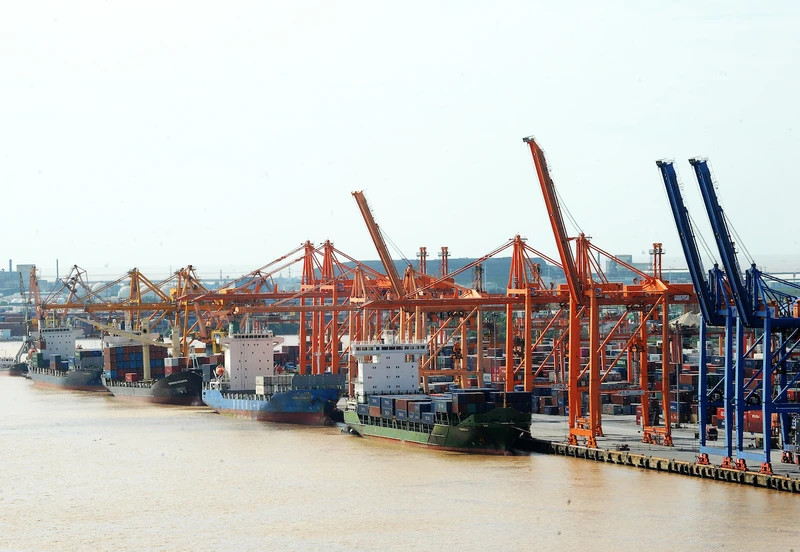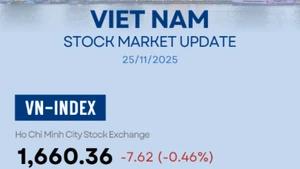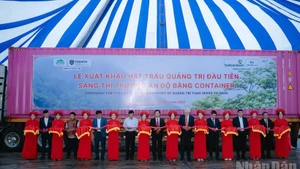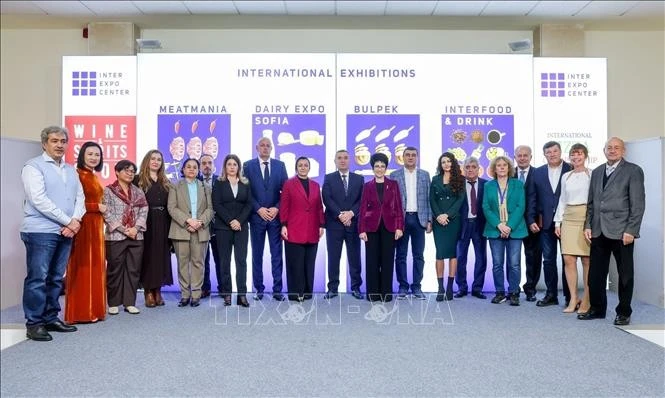In the context that inflation and the economic crisis are reducing the purchasing power of many countries, the expansion to new markets will be a reasonable direction for Vietnamese agricultural products to take advantage of FTAs and to be present worldwide.
Targeting potential markets and products
According to the Vietnam Association of Seafood Exporters and Producers, Chile is one of the first countries in Latin America to sign an FTA with Vietnam. Therefore, Vietnamese seafood businesses have an advantage over other countries when enjoying preferential tariffs under the Vietnam-Chile Free Trade Agreement (VCFTA) and the Comprehensive and Progressive Agreement for Trans-Pacific Partnership (CPTPP). In 2023, Chile was one of the few tuna export markets of Vietnam to maintain high growth. However, export turnover to this market currently reaches only 16 million USD.
Chile is the 13th largest tuna importer, among Vietnam’s 109 tuna import markets. There are considerable opportunities for businesses to export seafood to Chile because the living standards in this country are increasingly improving. Even in 2023, in the context of high inflation in other countries, inflation in Chile was at a low level. Meanwhile, the Chilean market does not set out as strict requirements on product quality as other countries in the European Union (EU) and Japan, so this is a great advantage for Vietnamese exports.
Russia is a potential market for Vietnamese tuna products and other agricultural products, thanks to tariff incentives from the Vietnam-Eurasian Economic Union Free Trade Agreement (VN-EAEUFTA). While Vietnamese frozen tuna loin is exempted from tax when exported to Russia under the VN-EAEUFTA, the same products from China and Thailand are subject to a tax rate of 3.8%. However, Vietnam is currently only the third largest tuna supplier for this market, after China and Thailand.
The ASEAN-India Free Trade Agreement (AIFTA) also benefits Vietnam’s agricultural exports. Commercial Counselor of the Vietnam Trade Office in India, Bui Trung Thuong, said India is currently Vietnam’s largest trade partner in the South Asia region, accounting for 84.9% of Vietnam’s exports to South Asia. Vietnam’s main export agricultural products to India in 2023 included rubber, wood and wood products, tea, pepper, and coffee. There is huge room for Vietnamese agricultural products to enter this world’s most populous market, especially since India’s standards for imported goods are not as high as many other markets.
The CPTPP includes 12 members, namely Canada, Mexico, Peru, Chile, New Zealand, Australia, Japan, Singapore, Brunei, Malaysia, the UK and Vietnam. Except for Asian countries, Vietnam’s agricultural, forestry and fishery exports to other countries remain modest. According to the Agency of Foreign Trade (Ministry of Industry and Trade), Vietnam continues to be Canada’s most important import partner among ASEAN countries, accounting for 43% of Canada’s total imports from the region. However, Vietnamese agriculture has not been able to utilise the advantages from this market because Canada tends to promote policies towards the South American economic bloc, which has affected the export of Vietnamese fruits and seafood.
The markets of Mexico and Peru, which mainly import seafood products from Vietnam, all recorded declines in 2023. Vietnam’s seafood exports to Mexico decreased by 25.1%, from 128 million USD in 2022 to 95.8 million USD in 2023, while exports to Peru reached 10.9 million USD, down 22.9%.
Disseminating information about FTAs
Nguyen Thi Hoang Thuy, Commercial Counselor of the Vietnam Trade Office in Sweden, concurrently Denmark, Norway, Iceland and Latvia, said that the Northern European market has yet to be utilised by many Vietnamese businesses. The reason is partly because this market requires more stringent quality standards than other markets, with some requirements even higher than those of the EU. On the other hand, there has not been much communication about the needs, consumption habits, and quality conditions of agricultural products in this market to Vietnamese businesses in recent times. Therefore, to exploit FTA markets equally, it is necessary to boost the dissemination of information and trade promotion in each country.
In early May this year, the Ministry of Industry and Trade sent a document to ministries, sectors, localities and associations on a plan to promote the communication about FTAs in 2024. Accordingly, they will focus on topics such as: building an ecosystem to take advantage of FTAs, market information and guidance on accessing FTA markets, enhancing brand value for businesses in FTA markets, and guidance on commitments in FTAs. Other issues will also be promoted, such as participation in the supply chain and connections with FDI enterprises, the training of human resources to implement FTAs, taking advantage of import sources to increase the FTA utilisation rate and the guidance on newly signed and ratified FTAs.
The Agency of Foreign Trade also said that the Ministry of Industry and Trade is operating a portal on FTAs, making it the only online interface with all the content that businesses and people can look up to make the most use of incentives from FTAs, such as information on rules of origin, market information, non-traditional commitments on labour and environment, real stories of businesses, and online training courses.
















